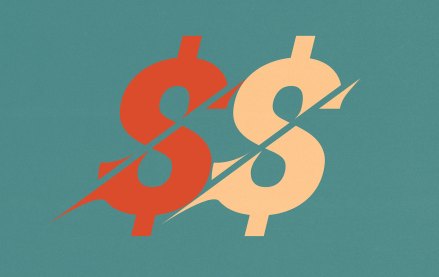
by Marcus Startzel, SVP, Commercial, AppNexus
It’s the age-old question heard in Philosophy 101 classes — If a tree falls in the woods, but nobody’s there to hear it, does it make a sound?
This might seem like a harmless question for students to ponder, but when this philosophy is applied to marketing budgets, the implications can become serious.
The current economic paradigm of digital advertising on the open internet incentivizes serving as many ads as possible. However, advertisers have little way of knowing with full confidence if, outside of the closed systems of Facebook and Google, their ads are seen by real consumers. Did the tree fall silently? It’s a crisis of confidence that independent technology companies can and must remedy, so that buyers of digital advertising pay if, and only if, their ads are viewed.
For the last 20 years, the digital advertising industry has been measuring success on a CPM basis (the cost of one thousand impressions), a strategy that values scale over audience time or engagement. Advertisers were rewarded for quantity of ads instead of quality, a model which invites a whole host of bad actors, low-quality content, and lazy techniques — click bait, pop ups, ad farms — onto the playing field. Meanwhile, the open internet and its users suffered under a barrage of bad advertising.
Then came Facebook’s announcement that they would charge only for ads that scrolled into view, and the walled garden became advertisers’ only available outlet for targeting consumers with both a high degree of accuracy and a guarantee of viewability. This is a clear problem for the thousands of quality domains and apps that offer superior, brand-safe content to the Facebook News Feeds chock full of user-generated content. To boot, Facebook hoards the data that advertisers could use to inform future strategies and really move the needle.
In order to keep up in an ever-evolving, increasingly-connected digital world, brands have to meet consumers where they are — on airplanes, at concerts, in the aisles of the grocery store. What’s more, consumer tolerance for disruptive, irritating, or repetitive advertising lessens as the technology in their hands advances — just look at the rise of ad blockers.
The problem for the programmatic media buyers who support these brands is that DSP technology hasn’t innovated to keep up with the demand for viewability. As eMarketer reported last year, many media agencies don’t even have line items in their systems to support anything other than a CPM-based media buy. This leads to a manual reconciliation process, adding yet another chore to a media trader’s extensive to-do list.
Now, the digital advertising industry has reached a critical juncture — in 2016 alone, a reported $7.4 billion dollars were wasted on poor quality display advertising — and it’s high time to start thinking about viewability as the default currency of advertising on the open internet. Indeed, independent advertising companies have a responsibility to put powerful, intuitive, data-driven tools in the hands of media traders and advertising buyers in order to solve this problem.
For the past three years, AppNexus has been investing in machine learning-driven technology to helps traders buy on a 100% viewable basis, even when publishers are still defaulting to sell on CPMs. On each impression, AppNexus automatically predicts the likelihood of a view and pays the publisher per impression based on that prediction. The buyer only pays for impressions that are viewable.
Ensuring viewability is one move in the larger roadmap for creating more productive incentives for and measurement of the efficacy of digital advertising. A viewability standard should serve as the foundation for further improvements to online engagement and its measurement. The evolution of the digital advertising landscape will herald further outcome-based buying solutions that enable marketers and agencies to buy advertising based on tangible and verifiable results like video completion as opposed to impressions. Every new development will lessen marketers’ dependency on walled gardens like Google and Facebook.
If the industry can assure advertisers that the ads they pay for will be seen by real humans, throwing away budgets on worthless impressions will become an unnecessary inefficiency. Finally, advertisers can once again turn their focus to quality creative strategy and campaign content.
On November 8, at our New York Summit, AppNexus plans to discuss how the next generation of buy-side technology shifts the paradigm from impressions to views. Stay tuned.
More from Digiday

The Disney-OpenAI deal and generative AI copyright concerns
This week’s Digiday Podcast delves into the copyright concerns and potential trademark issues surrounding brands’ use of generative AI tools, with Davis Wright Tremaine partner Rob Driscoll.

Why Pinterest wants to buy tvScientific, and what it signals for the CTV ads business
Corporate development sources estimate the deal valuation to be above $300 million, claiming tvScientific’s gross revenue is approximately $100 million.

Ad Tech Briefing: How the experts predict digital ad spend will pan out in 2026
Advertisers are placing greater emphasis on price and performance, often at the expense of transparency and control.





